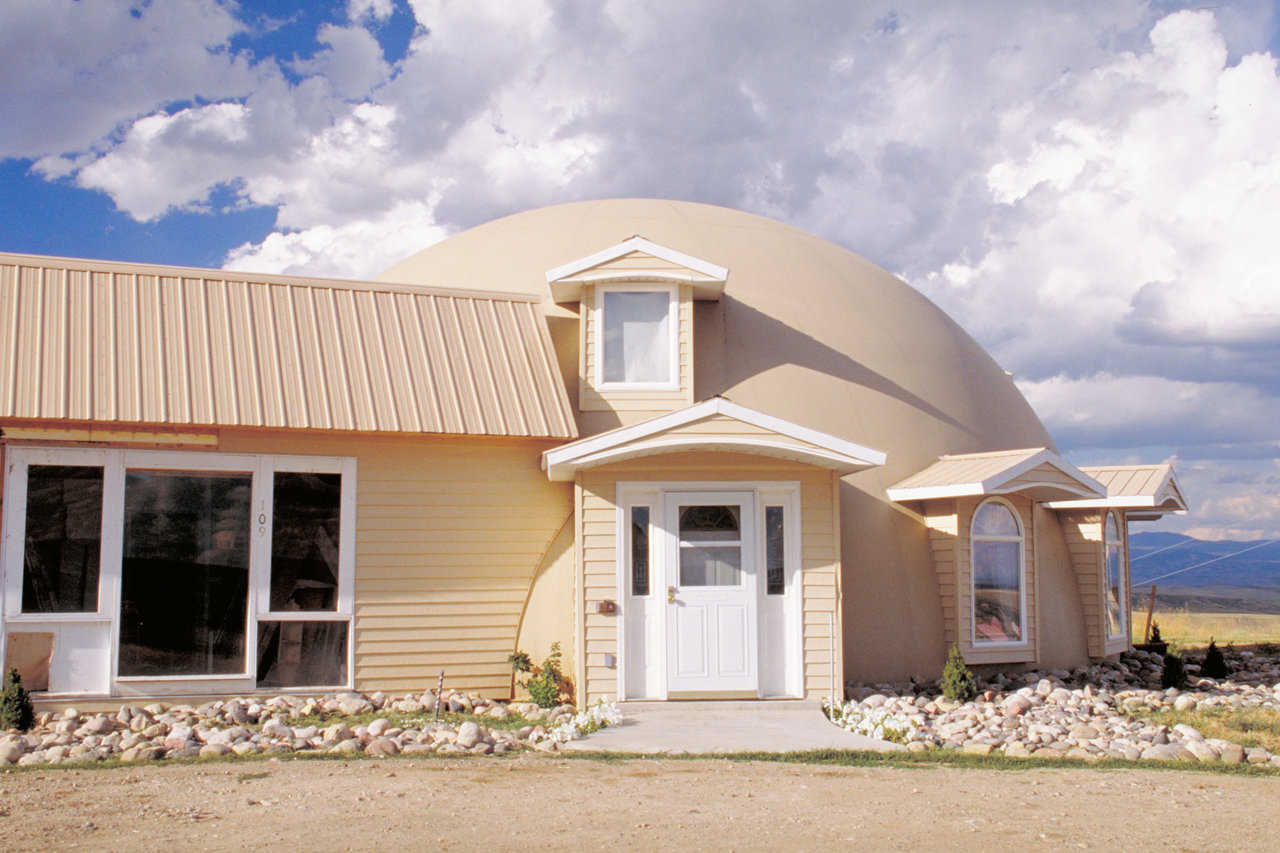A challenge
Keeping up with the Joneses? That’s some challenge if you’re talking about matching what the Scott Jones Family of Colorado did in building their Monolithic Dome home. This Jones Family, Scott, Luann and their children Gregory, David, Melissa and Jeffrey, completed much of the work for their two-story, 46′ × 23′ dome as a do-it-yourself project.
Once they had their five-acre home site on a hill above Craig, Colorado, with its elevation of 6200 feet, the Joneses 2½-year project began.
“I knew what we needed and what I wanted in our dome,” Luann, a full time homemaker, said. “So I did some research, then began drawing, by hand, on graph paper for scale.”
She sent those preliminary sketches to the Monolithic Dome Institute for evaluation and completion by MDI’s design experts.
Construction spurs curiosity
In May, 1994, the Airform and crew from Dome Technology, Inc. arrived and work on the shell began. Scott, professionally an electrician in an open-pit coal mine, worked along with Dome Technology’s crew. “That experience taught me a lot,” Scott said, “and gave me an opportunity to ask a lot of questions.”
He also began photographing each construction phase.
Meanwhile, droves of onlookers started assembling at the foot of the Jones driveway. “There was so much curiosity in the neighborhood,” Luann recalled. “People began speculating about what was going up — particularly when they saw the Airform inflated, then the shell built.”
Luann eased their worries and curiosity by creating a billboard with pictures of Monolithic Dome homes and an explanation of what the Joneses were building. “The children and I placed it at the start of our driveway, and many people did stop to read it. Right now, we are the only Monolithic Dome in Craig, so there is a lot of interest,” Luann said.
More research for this family project
As construction progressed, the research did, too. Information for each building step was gathered from local officials for compliance with construction codes and regulations, and from MDI, the public library and the Internet. “We did most of the work ourselves,” Luann said. “The children did hammering and helped with plumbing, framing, sheet rock, and the septic system. I even did electrical wiring. Scott told me what size to cut the wires, where to put the boxes, how to hook things up and I did it.”
Their reward and result: A “beautiful Monolithic Dome home” with 3,000 square feet of living space and a “gorgeous view of the Rockies,” Luann said. “It gives you the feeling that you really can see forever because you can see Bear’s Ear (its huge rock chunks resemble ears), Black Mountain and Steamboat Springs from our home.”
Moving in
In January 1997, just after Christmas, the Joneses moved in. Their dome’s main floor encompasses a 12’x25’, pastel rose formal living room with a speaker system for music but no television; a 14’x16’, pastel blue family room with TV; a dining room with simulated oak wood floor and chandelier; an office; a kitchen with oak cabinets and brass knobs and light fixtures; a bathroom; and Gregory’s bedroom which he generously vacates for overnight guests.
Other special touches include arched windows whose curves compliment the dome’s shape, oak doors and trim, a ceramic tiled entry, a central vacuum system, and an intercom that provides communication from the kitchen to the front door and garage.
An L-shaped, carpeted stairway, decorated with curves and swirls of oak, leads to the upstairs balcony, the master bedroom and bath, three additional bedrooms and one bathroom.
The balcony provides a walkway into the other rooms and a view into the open living room below. “It all looks very spacious,” Luann said. “The openness and quiet continually amaze our visitors — especially people who have never been in a dome.”
That feeling of spaciousness continues in the upstairs bedrooms. “None of the upstairs rooms have a flat ceiling,” Luann explained. “They have bay windows and the walls go up to the top of the dome, so the rooms have that cathedral look.”
The heating system and learning how to use it
The Joneses use a two-part system for heating. Radiant floor heating warms the downstairs. Luann said, “Before we poured the slab, we installed wire mesh, then 1/2” hot water tubing, in loops, throughout the floor area.” An electrically powered water heater and pump, located in the utility room, heats and circulates the water.
A forced air system, using a coal burning pellet stove also in the utility room, warms the upstairs. “Even though coal is used,” Luann explained, “with this system, there is no coal dust or smoke inside the house.”
The Joneses laugh about their first dome-heating experience. “We thought the dome would take a long time to heat, so we set the thermostat at 90 degrees,” Luann said. “Within four hours the house was too hot! And that mass of heated water stays hot.”
Windows placed on the south side allow sunlight to help warm the dome and minimize heating expenses. “We shut off the heat in April and don’t turn it on again until the first freeze,” Luann said. “It’s wonderful living in a Monolithic Dome. Our electricity — in the coldest months — has been only about $125 — less than half of what neighbors are paying to heat comparable size houses. They pay $300 to $400 a month.”
The very inexpensive cooling system
Instead of air conditioning, the Jones’ dome is cooled with a ceiling fan in the stairwell and an open window on each level. “We’re on a hill, and we always have a breeze,” Luann said, “and because of the dome’s insulation, that’s all we have to do to keep it cool.”
Was it worth it?
Once they were settled, looking through the album that documented their construction efforts became a favorite Jones Family pastime — especially with interested, inquisitive visitors. “People would marvel at how much we did,” Luann said. “They would say things like, ‘That was a lot of work. Was it really worth it?’ It got to the point where we began wondering ourselves: was our doing 80% of the work worth it? Well, we got our answer when the dome was appraised.”
The Jones dome — much of which was completed as a family do-it-yourself project — cost $38 per square foot for a total construction cost of $114,000. It appraised at $170,000.
Note: This article was originally presented in the Fall 1998 Roundup. Dollar amounts quoted are 1994/7 prices.
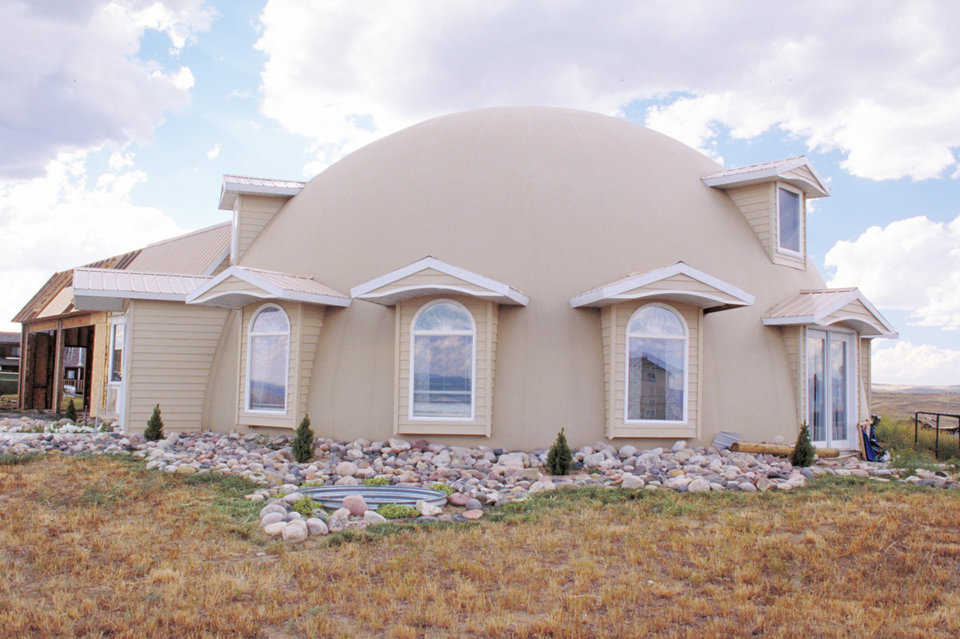
A family do-it-yourself project — From 1994 to 1997 the Jones family continued working on their home at a total construction cost of $114.000. It appraised at $170.000.
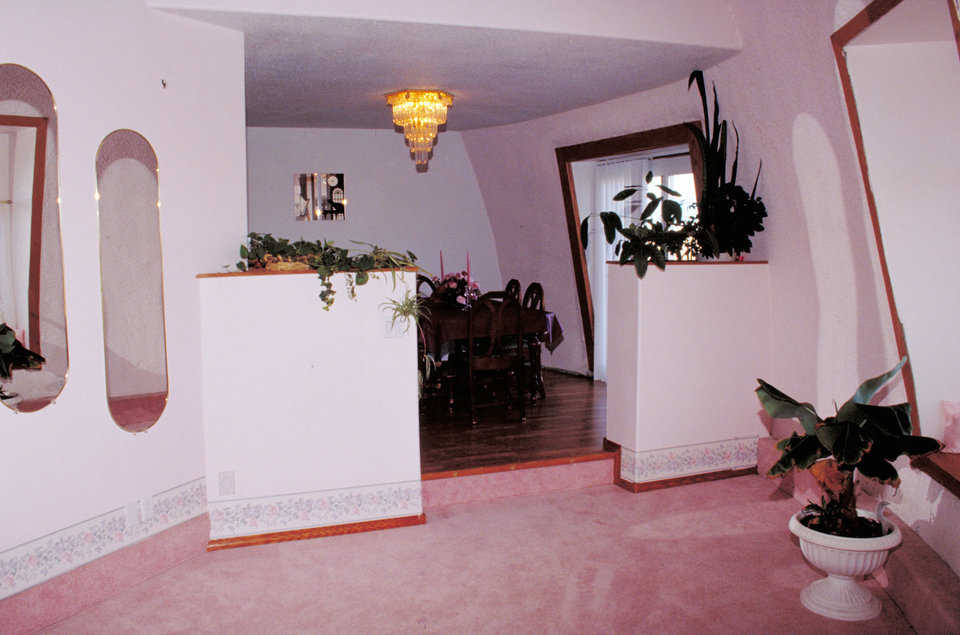
Beautiful finishes — Some areas, such as the dining room, have a simulated oak floor. Real hardwood was used for the baseboards and trim throughout the house.
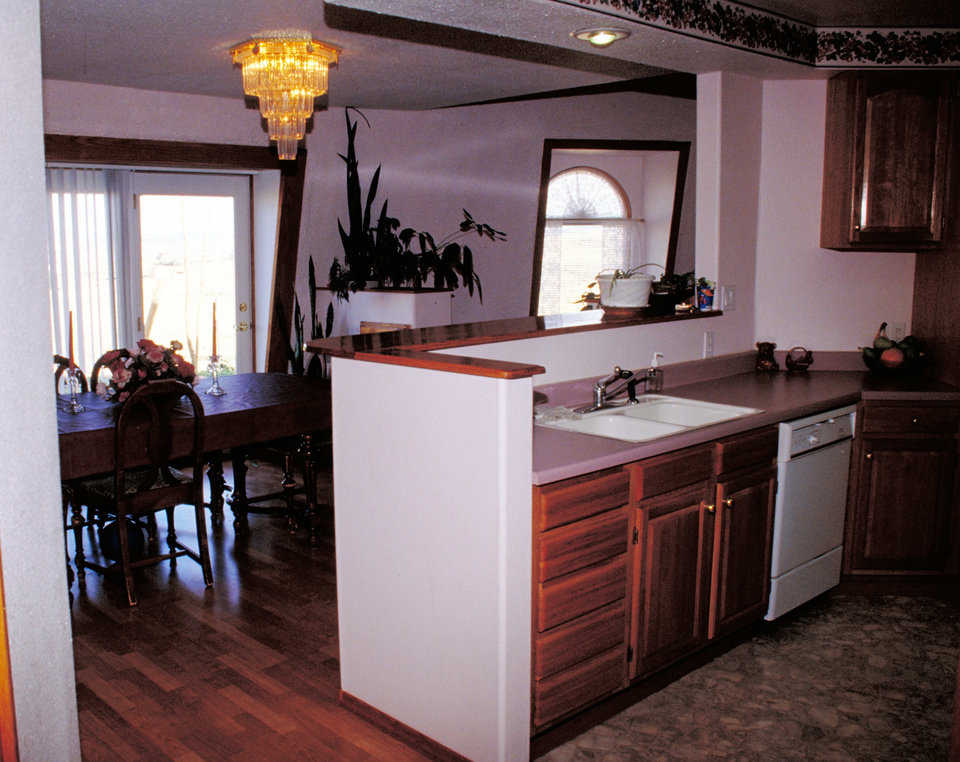
Serene cooking and dining — The dome’s openness and quiet continually amaze their visitors, especially those who had never been in a dome.
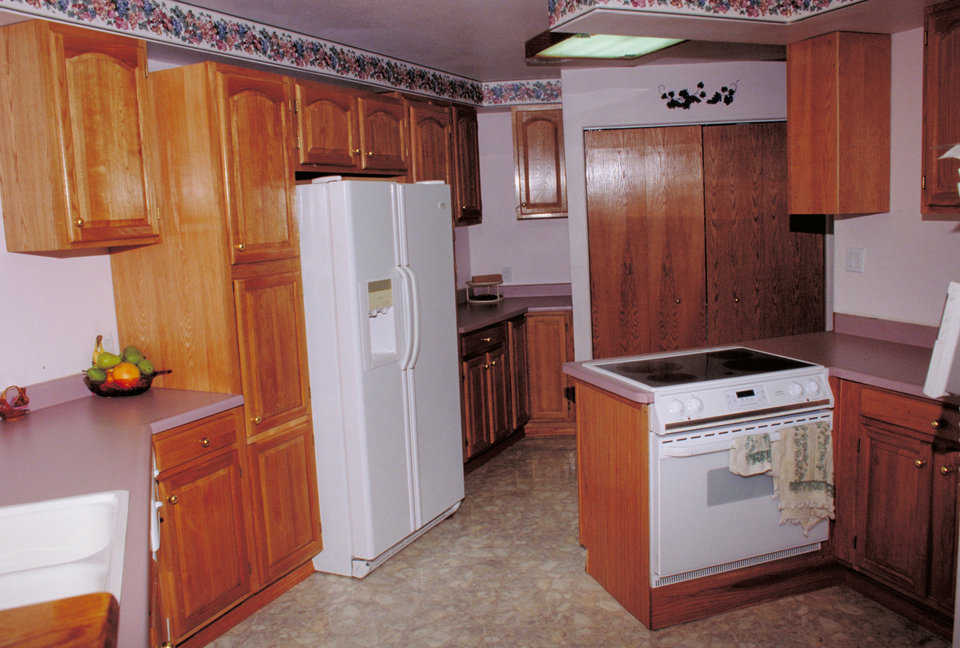
Angles — Owners used unique angles to get the most from their kitchen.
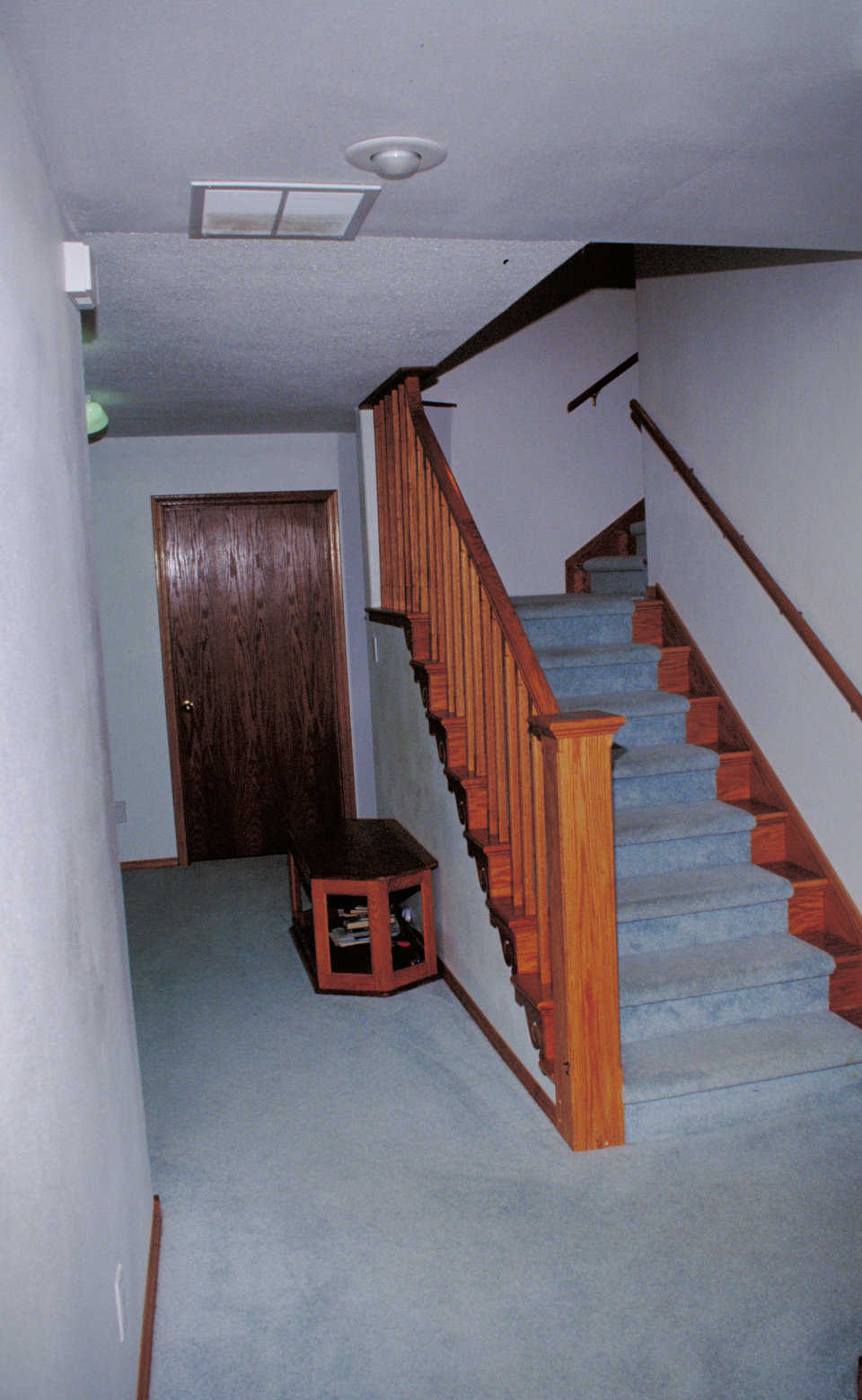
The way up! — This L-shaped stairway includes an attractive, solid oak banister with swirl accents.
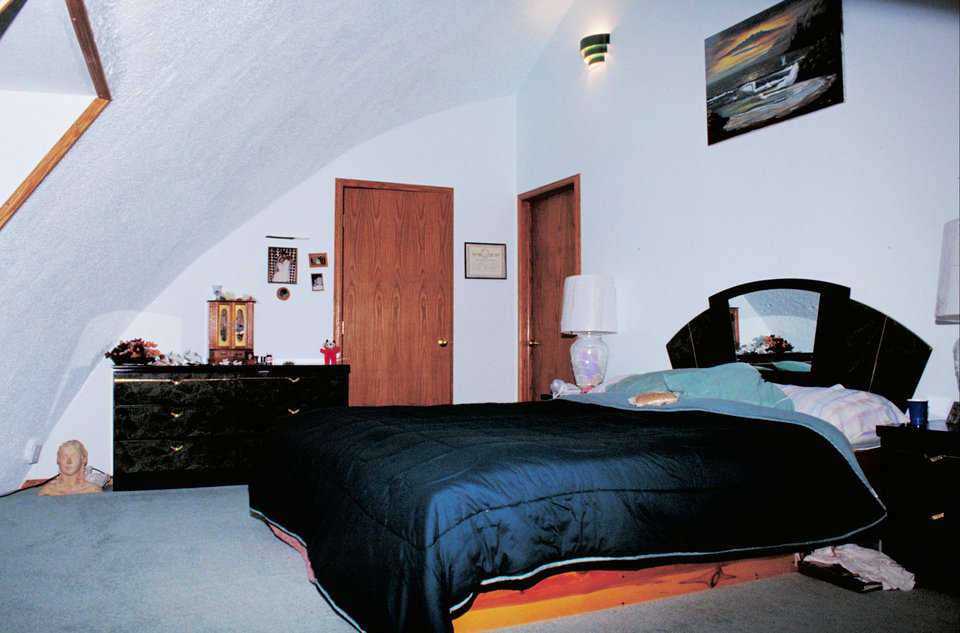
Master suite — This spacious bedroom includes a curved ceiling and bay windows.
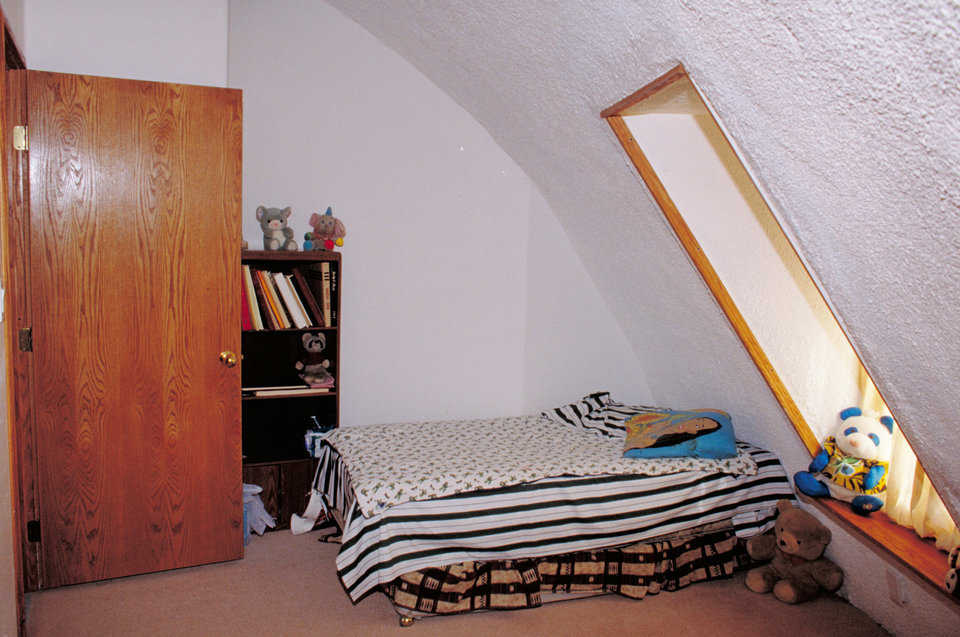
Bedroom — This second-floor bedroom shows how usable the room is even though the dome wall comes in further.
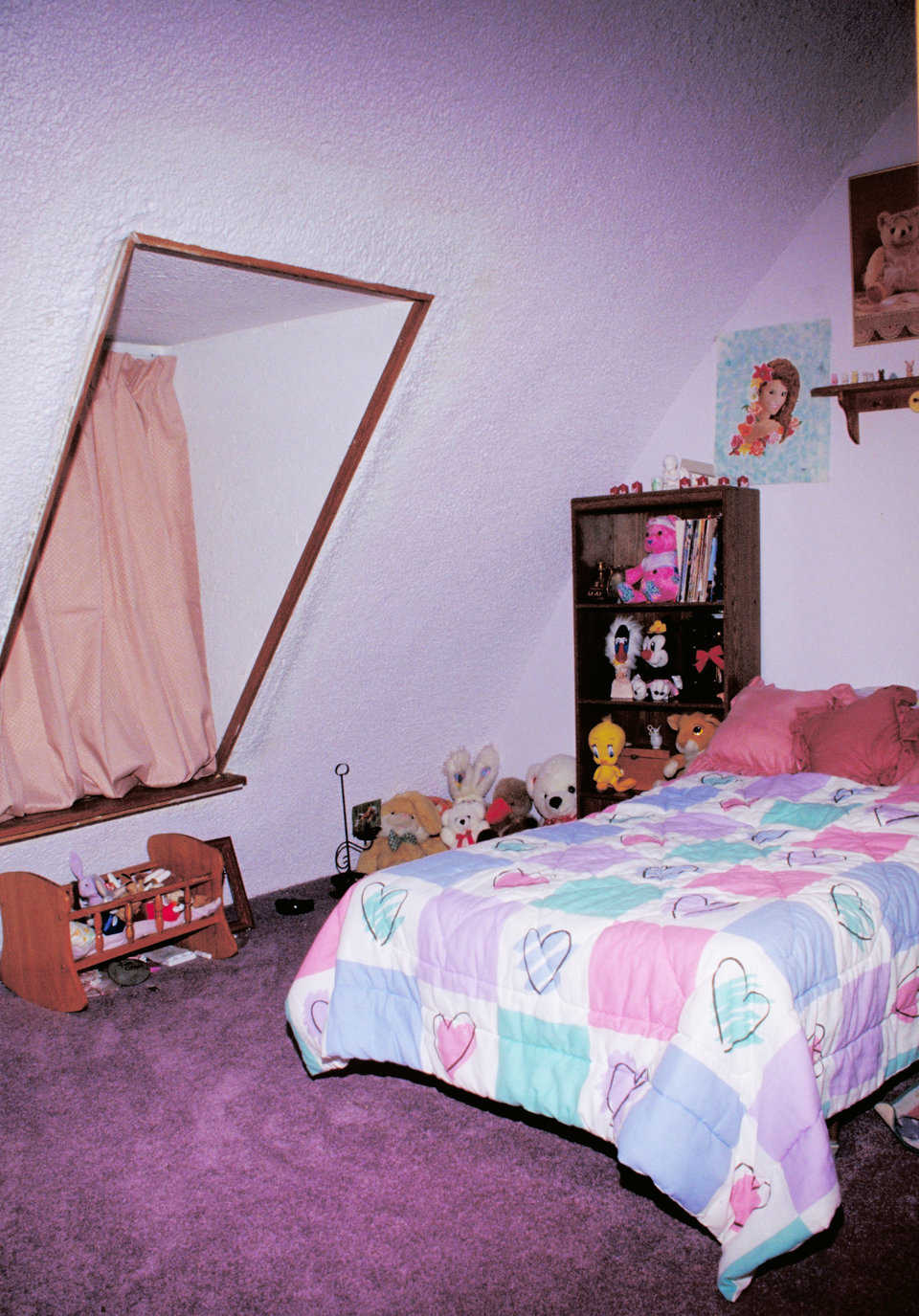
Pink! — It’s a girl’s bedroom — no doubt about that!
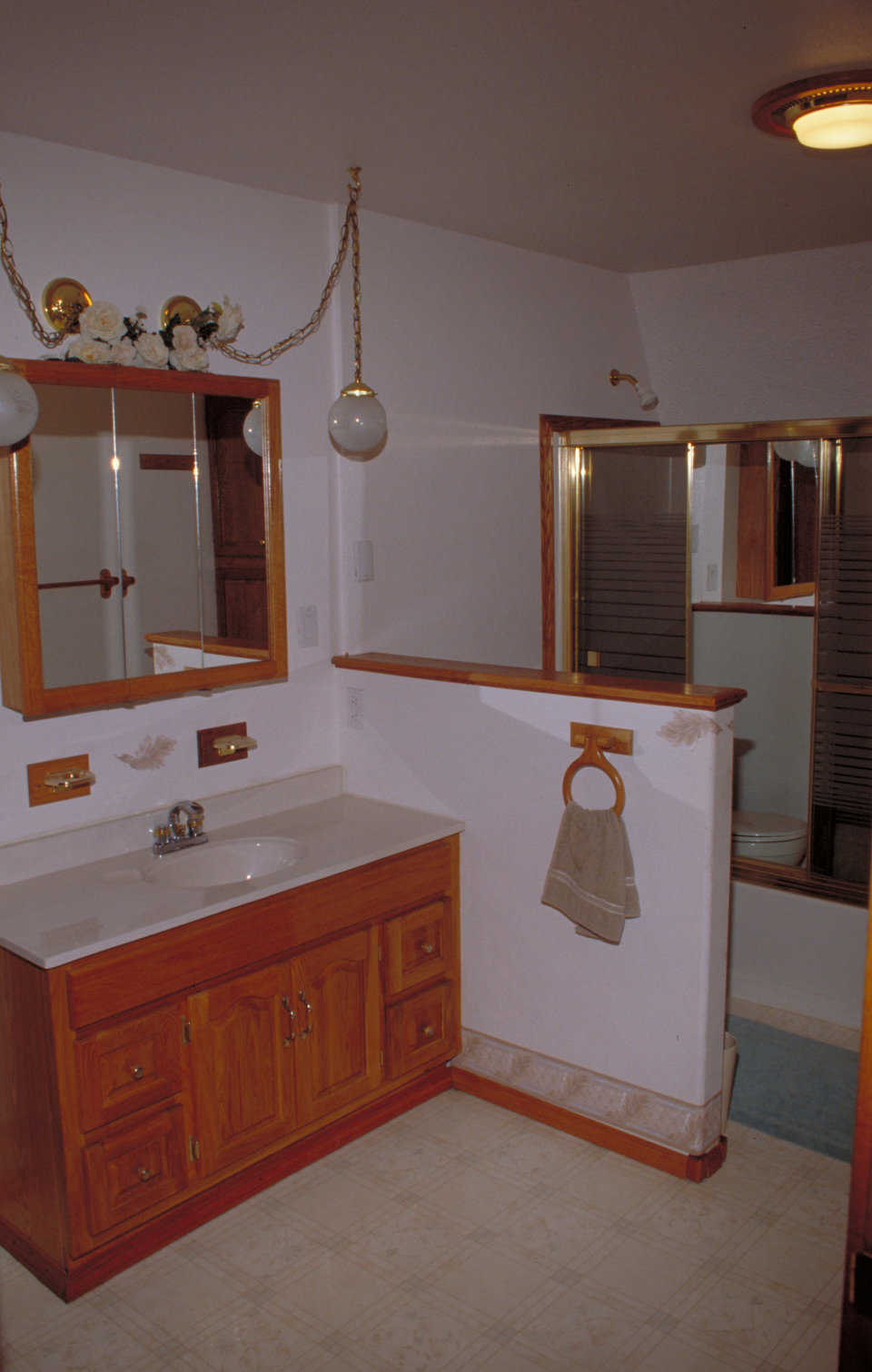
Master bath — This well planned, attractive bathroom is the result of some serious shopping.
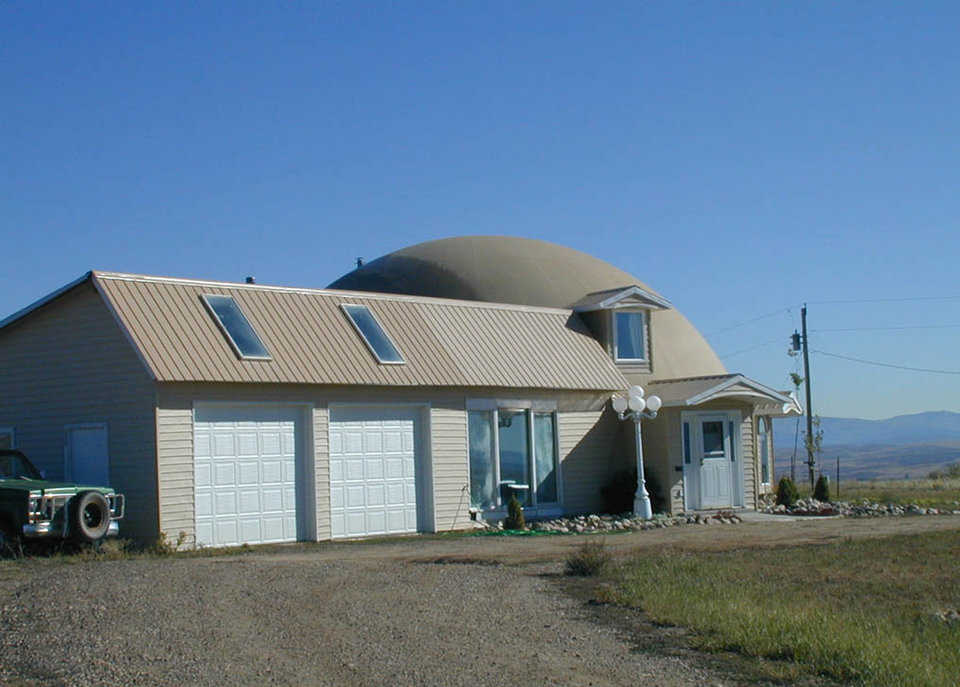
Garage — Once the Jones family moved into their dome-home, they began working on the attached garage.
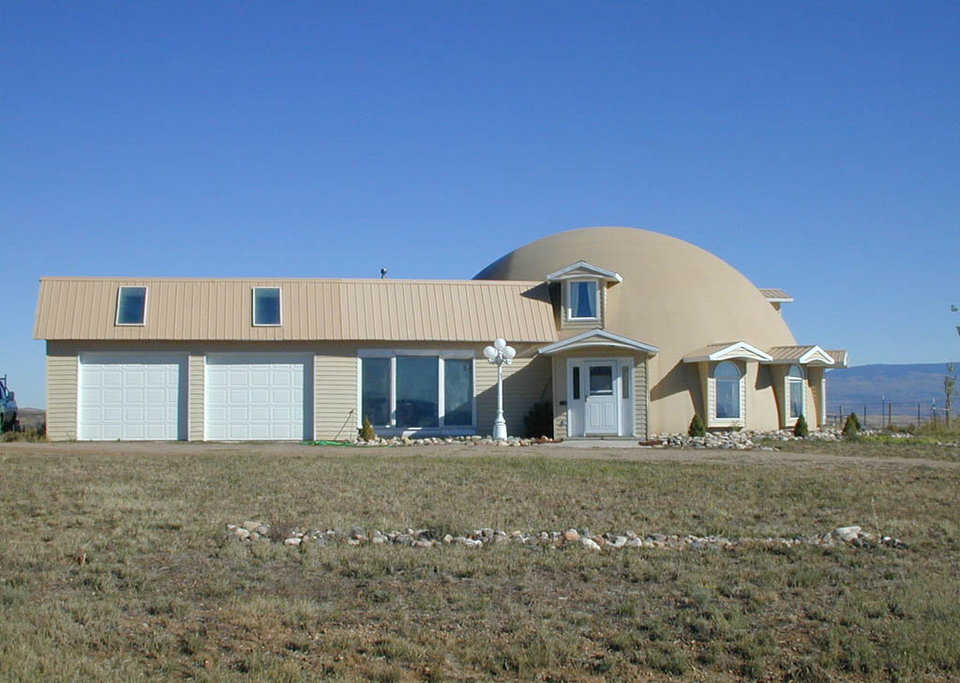
Site with a view — This Monolithic Dome home sits on a hill, above Craig, Colorado, at an elevation of 6200 feet.
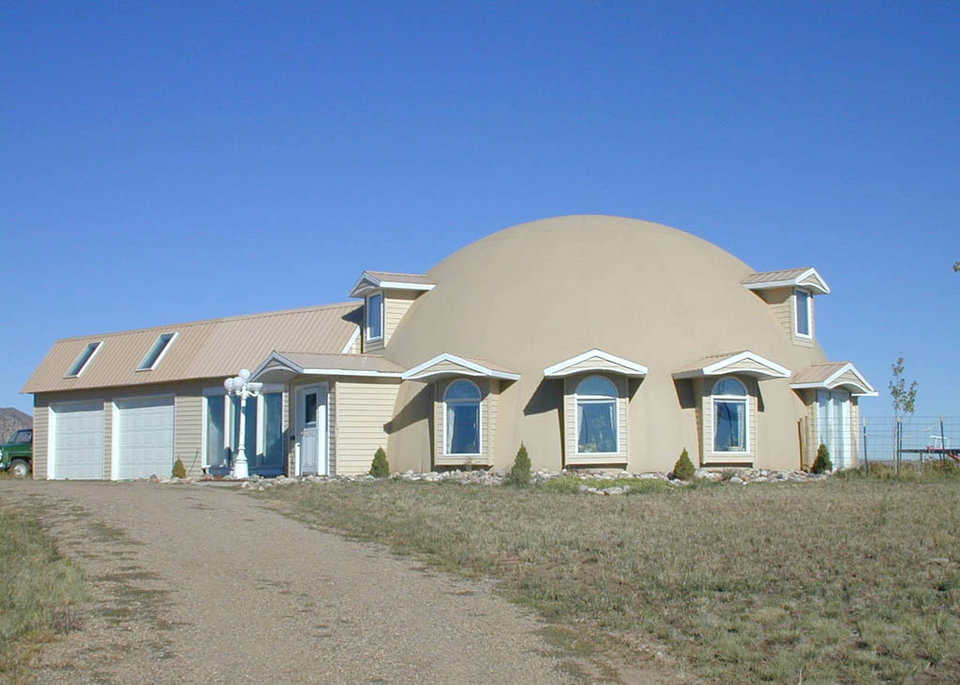
A long-term project — It took the Jones family 2 1/2 years to finish their dream home.
